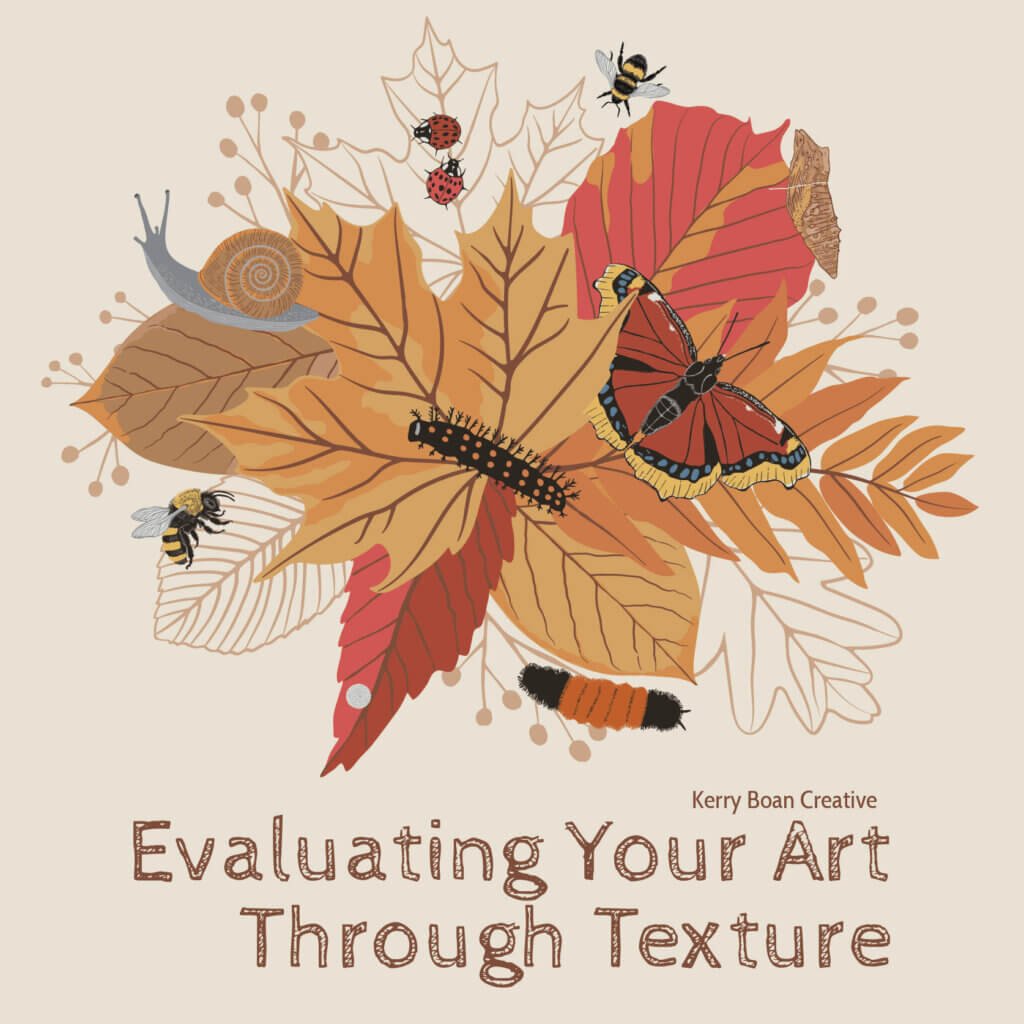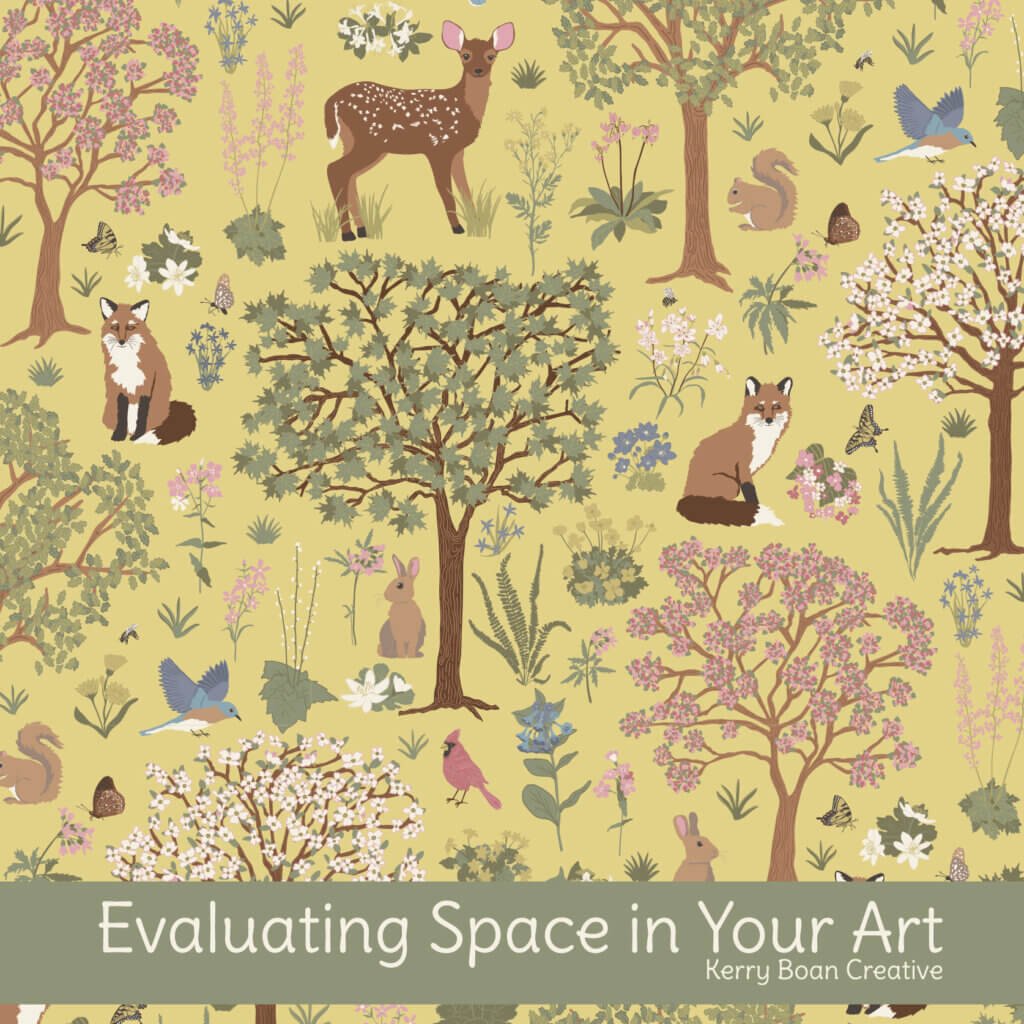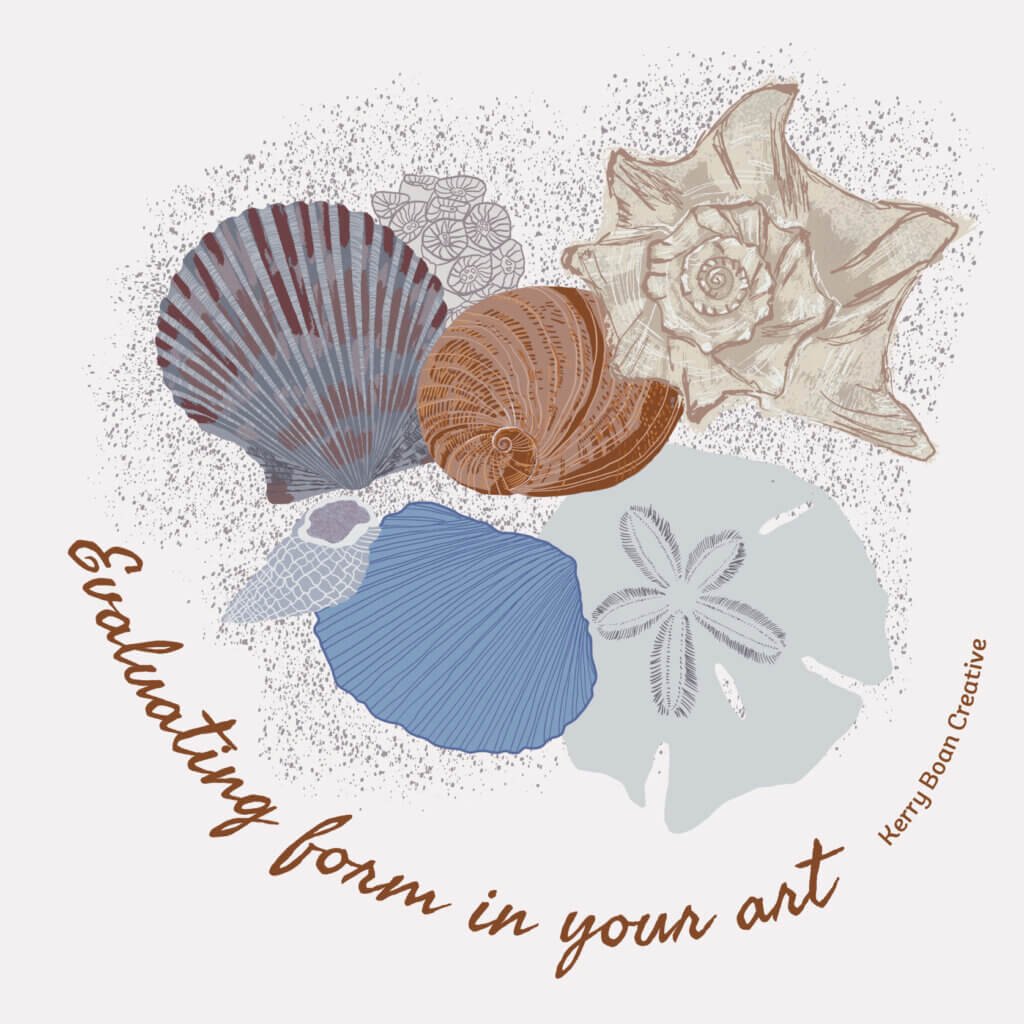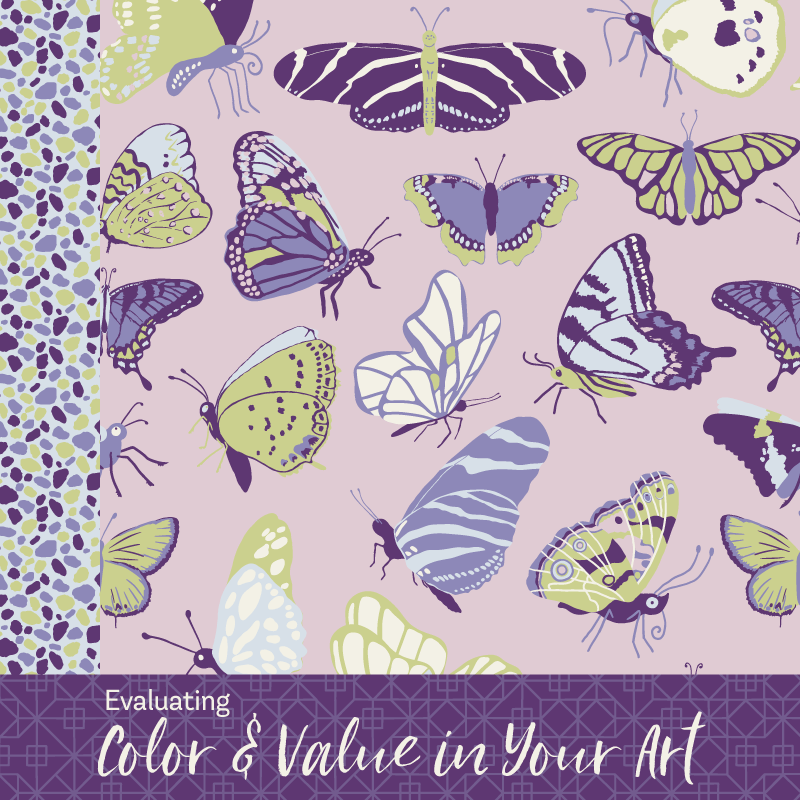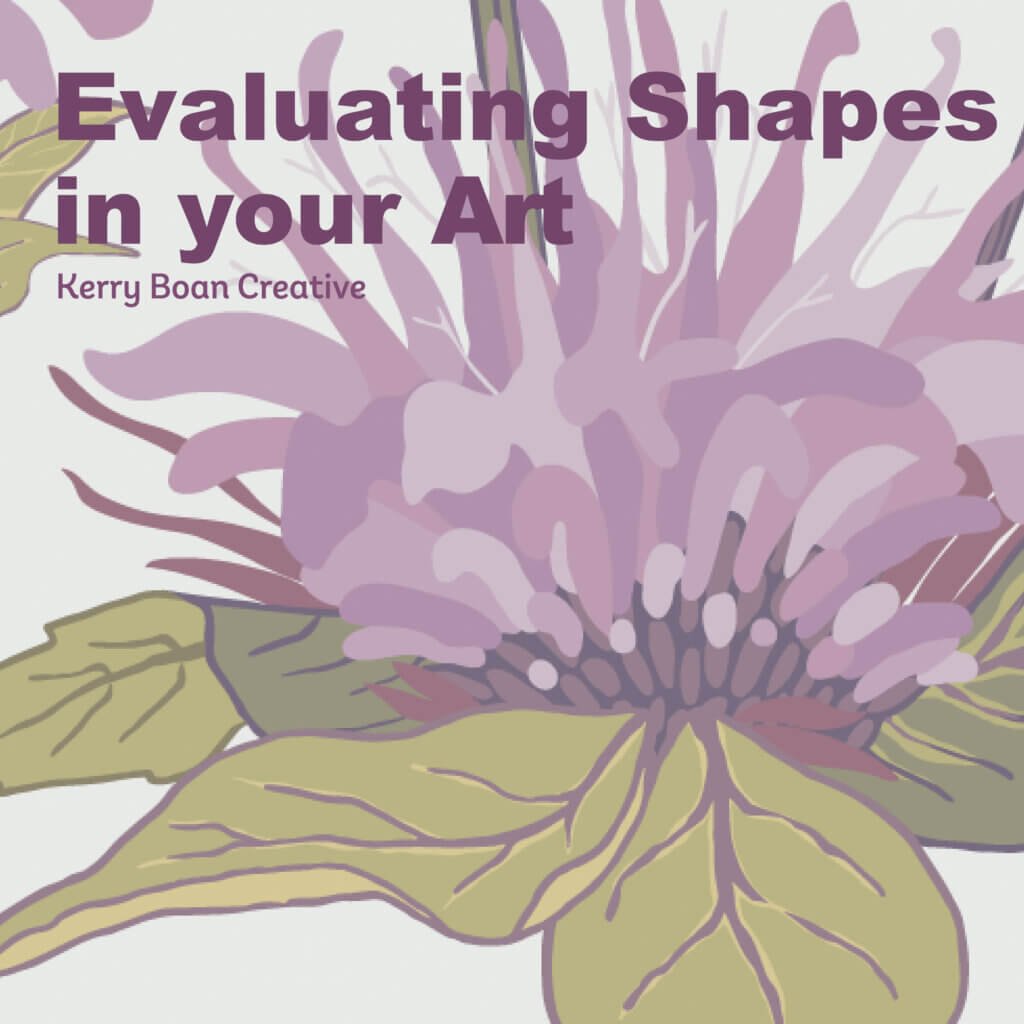Texture is one of the seven elements of art, and in illustration it is usually implied rather than real. It comes from marks, patterns, or digital effects that give the sense of a surface. Texture can be used to suggest form and detail in a more representational way, or it can become highly stylized, leaning into decorative patterns. It can also be left out entirely to create a flat, graphic look.
When evaluating texture, the goal is not to catalog every mark but to notice how it is being used, how much of it is present, and what effect it has on the overall piece.
Texture as illusion of surface
Texture can make an object appear rough, smooth, soft, or glossy, depending on how it is drawn.
- Rough, gritty, or scratchy marks
- Soft, fuzzy, or blurred effects
- Smooth or polished finishes
- Something else…
Texture as pattern or decoration
Texture can also become decorative, functioning more like pattern than surface illusion.
- Dense, repeated marks that fill space
- Loose, gestural marks that suggest energy
- Decorative motifs or doodles that add embellishment
Texture through line & mark-making
The quality of line itself can create texture. A jagged, sketchy line reads differently than a smooth, controlled stroke.
- Jagged or broken lines that feel rough
- Fluid, continuous lines that feel smooth
- Cross-hatching, stippling, or scribbles used as texture
Texture and depth
Texture can reinforce form by wrapping around a shape, or it can flatten a shape into a decorative surface.
- Texture that follows the curve of a form suggests volume
- All-over texture flattens the surface into a pattern
- Contrast between textured and untextured areas creates focus
Texture through digital means or art materials
Tools and mediums create their own textures. Digital brushes, scanned materials, or paint effects all bring unique surfaces into an illustration.
- Grainy brushes that mimic pencil or charcoal
- Painterly textures that mimic gouache, watercolor, or oils
- Collaged or scanned textures layered into digital work
- Actual art materials that create these applied textures
Texture can be bold, subtle, decorative, representational, or completely absent. As you evaluate illustrations that inspire you, notice whether you are drawn to pieces that use heavy texture, minimal marks, or none at all. That awareness gives you one more piece of your visual vocabulary to bring into your own work.
